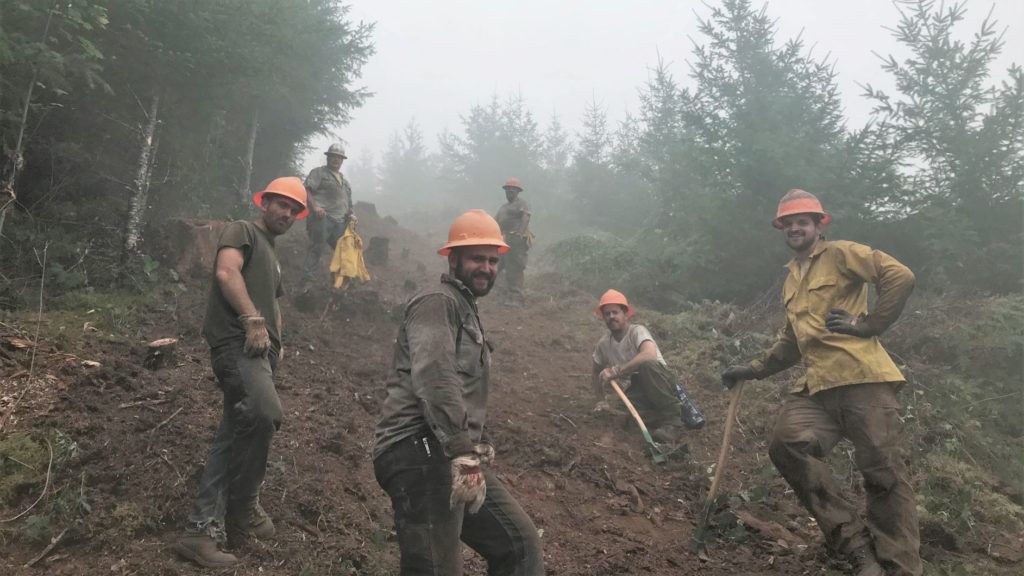For Immediate Release
Contact: Andrea Watts, OSAF: 503-224-8046, wattsa@forestry.org
PORTLAND—The Oregon Forest Protective Association (OFPA) has received the Forestry Appreciation Award from the Oregon Society of American Foresters (OSAF). Members of the OFPA accepted the award at the OSAF virtual Annual Meeting on May 13, 2021. This award is presented whenever appropriate to individuals, groups or institutions outside the forestry profession that have contributed significantly to the advancement of forestry in Oregon.
Oregon Forest Protective Association (OFPA) was incorporated in 1910 as the OFFA (Oregon Forest Fire Association), which was changed to Oregon Forest Protective Association in 1958. This system has become known as Oregon’s Complete and Coordinated Fire Protection System, which includes forest protective associations statewide, the Oregon Department of Forestry (ODF), and cooperating agencies. The forest protective associations are made up of forest landowners, both industrial and non-industrial, as well as Bureau of Land Management (BLM) in western Oregon. Three of the associations are operating associations, providing protection for their members and other forest landowners by contract with the State Forester.
“Oregon’s wildland firefighting system is unique in its public/private partnership,” said Kyle Williams, Director of Forest Protection for Oregon Forest & Industries Council. “Forest landowners and forest industry operators and contractors engage on a regular basis with Government firefighting personnel (primarily ODF) to provide enhanced initial attack capability with their own company firefighting equipment and personnel. Loggers, road builders, timber fallers and reforestation contractor crews routinely leave their ‘day jobs’ to do initial attack on fires in successful efforts that extinguish fires early, keep resource loss to a minimum and provide special skills and equipment to build fire line, open roads, fall burning snags, extinguish hot spots and provide mop-up services.”
During the 2020 fire season, the entirety of western Oregon, from the Oregon-California border north to nearly the Columbia River, was enveloped by fire. Five fires in the Cascades burned over 100,000 acres each, moving into Oregon’s top 20 wildfires by size since 1900. All told, over a million acres burned in total in Oregon including losses on U.S. Forest Service-protected (USFS) lands. Roughly 400,000+ acres burned on the private, state, and local government lands fully protected by ODF or fire protective associations, with another 100,000+ acres burned on western BLM lands for which ODF and the associations have initial attack responsibility.
“When the Labor Day fires blew up and quickly exhausted all government agency resources, that private partnership became critical to the efforts to protect homes and communities,” explained Williams. “Private timber industry employees and landowners immediately engaged on the hundreds of miles of fire line throughout the state—those woods workers who would normally be managing an operation, laying out a unit, running a log-loading shovel, building road with an excavator, setting chokers or thinning young forest stands—hauled over 350 pieces of equipment and deployed over 650 trained personnel to the fires and pitched in side by side with ODF and USFS fire fighters in what became an incredible example of the complete and coordinated system.”
Oregon’s complete and coordinated system, although sorely tried and tested, delivered in the end.
OSAF and its 15 local chapters represent all segments the forestry profession within the state. The society includes public and private practitioners, researchers, administrators, educators, and forestry students. Its mission is to advance the science, education, technology, and practice of forestry; to enhance the competency of its members; to establish professional excellence; and to use the knowledge, skills, and conservation ethics of the profession to ensure the continued health and use of forest ecosystems and the present and future availability of forest resources to benefit society.
###

